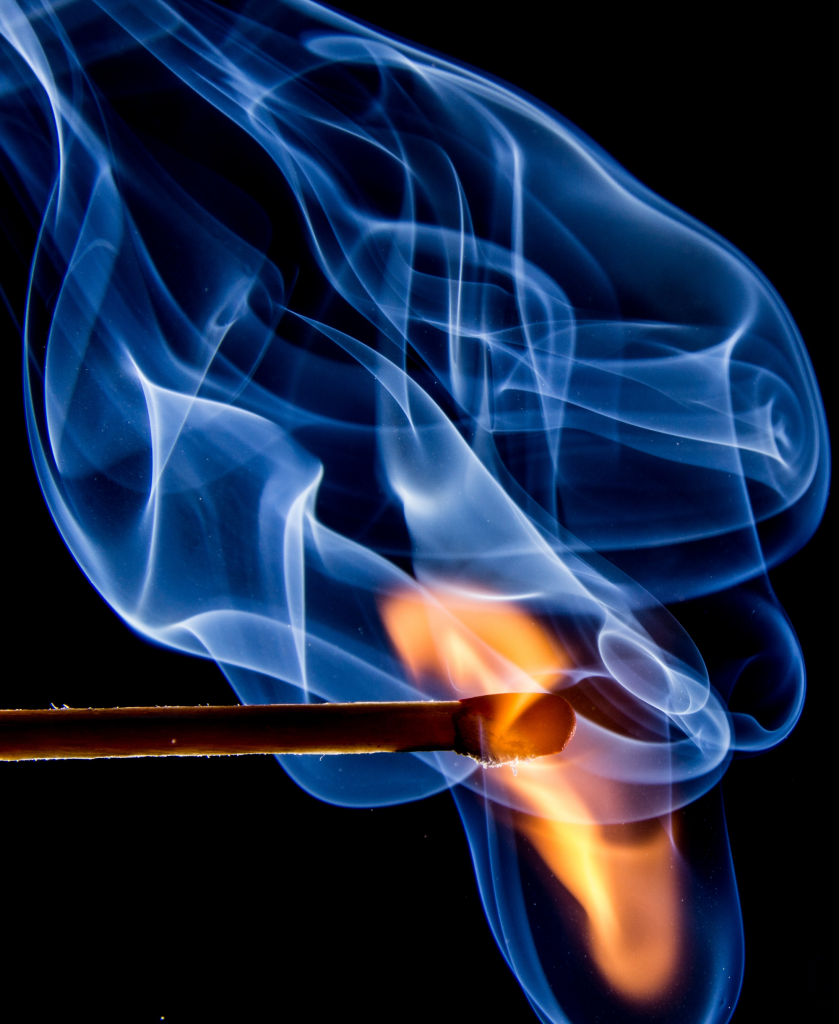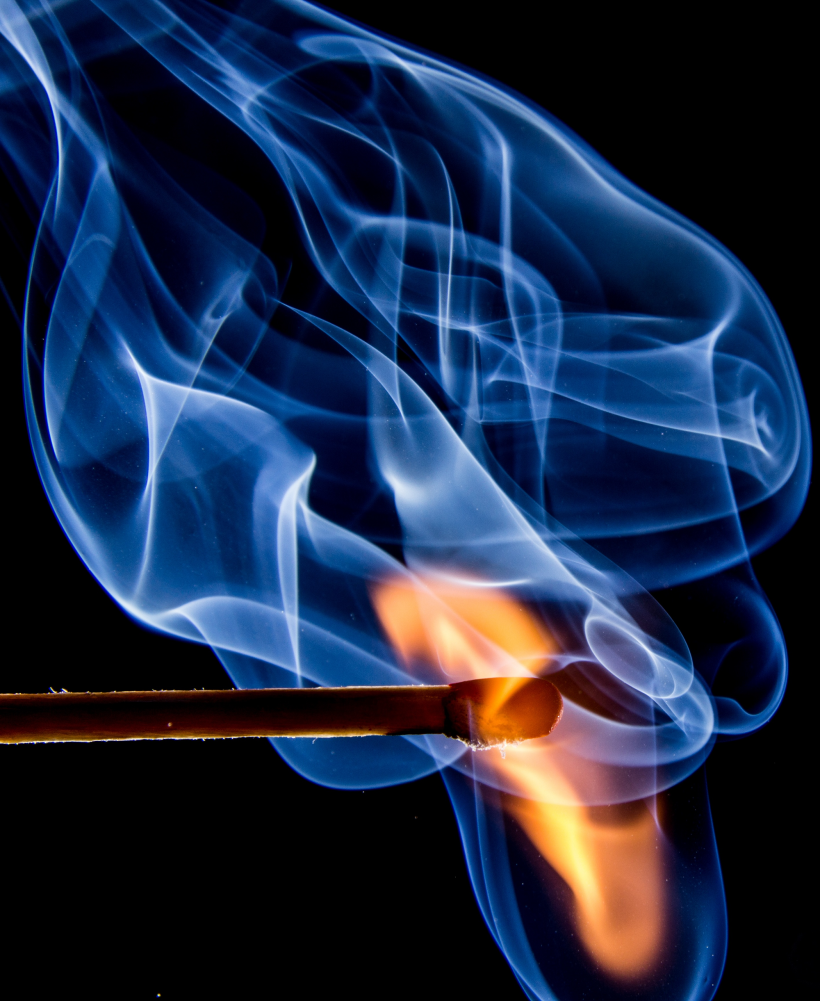
Gaining the ability to produce fire is often looked upon as one of the defining triumphs in the evolution of mankind. It allowed early human species to venture out into the dark & persevere through the cold in order to expand the physical world known at that time, in many ways directly leading to the world, the culture, & the technological era that we live in today. It is always quite interesting to discover how primitive elements are often still reflected in modern methods & innovations. Take the strike-anywhere match. How many realize that the same underlying foundational principle that governed the creation of fire in the Paleolithic Era is still used in our most common fire-starting tools? The principle that I speak of, is of course generating heat through friction. Friction between separate pieces of wood or rock, or eventually flint & steel provided the driving force for fire production way back then just as it is deeply ingrained in our contemporary methods of generating fire. Same underlying principle, brand new delivery vehicle. Modern strike-anywhere matches still accomplish what the cavemen did with their primitive methods, but the evolution in scientific understanding has enabled this highly complex, multi-faceted small, lightweight, inexpensive tool to lead to unprecedented ease of fire starting. With a little bit in the way of understanding historical significance under our belts, it’s time to talk about what I set out to write this article about…as tempting as it may be for me to turn this into a homage to some of the beautiful fluid mechanics at play in the above picture, today I want to focus on the composition of these matches. We are going to explore the make-up of these tools by journeying through the action of lighting the match in a very brief manner. Was it unnecessary to spend so long talking about the importance of fire & how matches exemplify how scientific learning has changed our world? Perhaps, but a little bit of mixing history & the science of today is a good thing from time to time.
So let us begin with the strike. The strike is the first initiating action you take when you go to light a match. You grab the match stick, sweep the head up against a rough surface & STOP. We have arrived at our first road stop in the educational journey. So what exactly are you bringing up against said rough surface? The match head is really a conglomerate of many materials & ingredients, but the first one to contact your rough surface & start the whole process is something you might not expect. Powdered glass. That’s right, glass, this fine dusting of ceramic provides a nice, rough outer sprinkling of very hard particles. CONTINUE. As you begin to swipe the match across the rough surface, the high friction between the powdered glass & the surface begin to produce heat. Once the heat has increased above a lower threshold, the match begins to…STOP. At this point, the friction has provided enough heat to begin vaporization of the igniter, in most cases red phosphorous. As the red phosphorous begins to vaporize, a small portion will transform into white phosphorous, which is highly unstable, sensitive, & volatile and readily burns in the atmosphere, producing a large, violent flame (you likely have seen this sudden, seemingly briefly delayed flare up quite often when lighting matches). CONTINUE. YES, we have created fire…great, you have a flame…now what? STOP.
Again, already? You may have thought we were out of the woods, but the flame we just produced would be very short lived if it wasn’t for our next components: the oxidizer and the fuel. The flame from the phosphorous may have looked pretty awesome, but truth be told, we are going to need a lot more oxygen than our local atmosphere is providing if we want to keep the match head burning. Enter the oxidizer (which, it’s worth mentioning, would likely be the most awesome wrestler name ever). In this case the oxidizing agent is generally potassium chlorate & its job is to be broken down from the heat we just released through our phosphorous reaction, and in turn release more oxygen into the near vicinity. This oxygen, when combined with the flame & the additional fuel source (generally some form of sulfur, hence the all-too-familiar rotten eggs smell from a lit match), brings new, sustained life to your match, allowing the flame to continue burning. To add more fuel to the fire (both figuratively & literally speaking), the gelatin binder that binds together all the aforementioned match head materials (plus, a few common additives not mentioned, that vary from company to company) acts as an additional fuel source! CONTINUE. Great, now we really do have our fire…right? STOP. Sure, we could be content with our little fireball match head, but wouldn’t it be better if the whole match burned? Well, fire + wooden matchstick = more fire, right? Yes & no. Firstly, sure, why not, after all, you do have fire and a fuel source. On second thought, does that fuel source really compare to the specially designed fuel-oxidizer combination that we just burned through? Not quite, perhaps it is better to provide the fire with a little bit more motivation to burn through that match stick, and so we add paraffin wax which is a hydrocarbon compound derived from petroleum. Paraffin wax has many uses and would generally simply melt in the presence of high heat, but when it is exposed to a direct flame…well it’s going to do a lot to help our matchstick become quite flammable.
Now, I’ll resist throwing in another STOP & CONTINUE and just go for the finish line. Here we are, match slowly burning down, trying to light the grill before the flame gets too close and burns the heck out of our fingertips, and we can’t help but notice that most of the burned match is actually, by-and-large, completely out…no smoldering at all. Hmm, that’s pretty strange. Most match makers (to the romantically inclined: no…no, not that kind of match maker) include ammonium phosphate impregnated into the match stick to act as a fire retardant, this way once the paraffin wax has done its job to bring the flame along the matchstick, the previously burned portion of the matchstick is no longer a fire threat. Smart, huh? Of course, now it might begin to make a little more sense why that paraffin wax really is needed to bring the flame along to an even greater degree than we first stated. Also, note that in order for this to work, the matchstick must be dipped in the ammonium phosphate before the parrafin wax treatment, or else we would have retardant on the outside & catalyst on the inside…no good.
So to review: rough surface on powdered glass produces frictional heating, setting off the igniter which triggers more violent combustion, which in turn breaks down the oxidizer, which releases oxygen that combines with the fuel to sustain the flame, which is aided by a flammable binding material, giving the flame the extra oomph necessary to carry on to light the paraffin wax, which draws the flame along the matchstick, until the match burns out & is kept out by the fire retardant. All this packed into a simple matchstick that weighs less than a gram and costs about a cent. Pretty cool, right?

